Commercial dehumidifiers do more than reduce humidity. They also eradicate strong odors in basements, offices, and warehouses, while reducing the spread of microbes like mold.
However, the ability of commercial dehumidifiers to reduce humidity levels throughout the home in milder climates has led many homeowners to avoid using them. Why? It adds extra costs to their monthly electric bills.
But wouldn’t it cost more to run a dehumidifier without enough pint in larger spaces for longer periods? How much does it cost to run a commercial dehumidifier in a home? Keep reading as we answer these questions and factors that affect the cost of running a dehumidifier.
Here is a fun fact: dehumidifiers do not use more electricity than vacuum cleaners or heaters.

Why is that so?
The operating efficiency of a dehumidifier is determined by the amount of refrigerant in its factory-set compressor and the windward area of the rare earth alloy evaporator. The larger the volume of both, the greater the dehumidification capacity.
For instance, smaller volume dehumidifiers usually work more than expected when faced with sizes beyond the manufacturer’s recommendations and run almost throughout the day. On the other hand, larger volume dehumidifiers will remove moisture from the air as fast as possible and automatically go to standby when they are done, with a negligible amount of this electricity cost.
On average, a 50-pint dehumidifier consumes about 0.46 Kilowatts/hour of electricity or 460 watts. This means that even if you use it daily, the chances of getting a high utility bill at the end of the month are slim.
Generally, the average monthly cost of running a dehumidifier ranges from $14.56 to $42.59, depending on the model and pint capacity. This average is based on 13 AlorAir models. For instance, the 53-pint Sentinel HD55 (Blue) dehumidifier, ideal for spaces up to 1200 sq. ft, uses about 6 cents of electricity per hour.
So, what is the cost of running a dehumidifier?
The rest of this article will show you the running cost of different ALORAIR dehumidifiers studies and answers to several topics related to the running cost in general. These topics include how to calculate your dehumidifier operating costs, internal and external factors that affect the running cost, and 8 tips for you to save money on dehumidification.
Outline

Cost of Running A Dehumidifier – Commercial Models
A commercial dehumidifier’s ability to dehumidify bigger spaces in milder climates, reducing humidity levels throughout the home, makes it different from regular units. This is why commercial dehumidifiers consume more power on average than regular ones.
You’d find the voltage and current of the product in the specification sheet or the label on the back of the product. Multiply the voltage by the current to find the power of the product. The energy consumption appears in kilowatts per hour (kWh), translating to your product’s power usage per hour. You can also calculate the kWh by dividing the dehumidifier’s power by 1000.

Here is a dehumidifier power consumption calculator to get the cost of electricity consumed by the dehumidifier. First, multiply its power consumption by its running time. Then multiply the value gotten by your local electricity rate.
Dehumifier Running Cost Calculator
Just insert the dehumidifier power, how many ours you want to run it, and the electricity cost:
Dehumidifier Wattage (In W):*
How Long Will You Run The Dehumidifiers (In Hours):*
Insert Cost Of Electricity In Your Area (In $/kWh; US average is $0.1319/kWh):
Cost Of Running Dehumidifier For This Time:
For instance, if the average electricity price in the United States is $0.1319, then the HDi90 working for 8 hours yields;
639.4W * 1000 = 0.6394kWh
0.6394kWh * 8h * 0.1319 ≈ 0.674
Cost Comparison of Running Alorair Dehumidifiers
We tested the running costs of 4 different sizes of Alorair dehumidifiers, assuming a fixed operation of 8 hours per day.
| Model | HD55 (Blue) | HDi90 | HDi100 | HDi120 |
|---|---|---|---|---|
| Power | 460W | 639.4W | 784.3W | 897W |
| COP | 2.27L/kWh | 2.69L/kWh | 2.7L/kWh | 2.7L/kWh |
| Energy Star | No | Yes | No | No |
| Size for | 1200sq.ft | 2600sq.ft | 2900sq.ft | 3300sq.ft |
| kWh/day | 3.68kWh | 5.1152kWh | 6.2744kWh | 7.176kWh |
| 8 working hours | $0.49 | $0.67 | $0.83 | $0.95 |
| kWh/month | 110.4kWh | 153.456kWh | 188.232kWh | 215.28kWh |
| 30 Working days | $14.56 | $20.24 | $24.83 | $28.40 |
| Day Humidity Removal | 18.16L | 21.52L | 21.6L | 21.6L |
| Month humidity removal | 544.8L | 645.6L | 648L | 648L |
We conclude the following:
1.The Sentinel HD55 (blue) dehumidifier is the most economical in the commercial line and is suitable for spaces up to 1200 square feet. It uses about 6.1 cents of electricity per hour. This is the most cost effective option for short buildings and basements! Click here.
2.Sentinel HDi90 is ENERGY STAR qualified for a 2600 sq. ft. space. Uses approximately 8 cents of electricity per hour. A proven choice for medium to large sized homeowners!
3.Sentinel HDi120 with cETL certified for 3300 sq. ft. of space, is ideal for use in townhouse apartments.
Running Cost Comparison of Commercial Dehumidifiers and Home Dehumidifiers
We have also estimated several home dehumidifiers.
| Model | AlorAir HD55(Blue) | Waykar PD08E | BLACK+DECKER BDT30WTB |
|---|---|---|---|
| Power | 460W | 400W | 330W |
| COP | 2.27L/kWh | 1.3L/kWh | / |
| Energy Star | No | No | Yes |
| Size for | 1200sq.ft | 4500sq.ft | 3000sq.ft |
| kWh/day | 11.04kWh | 3.2kWh | 2.64kWh |
| 8 working hours | $0.49 | $0.42 | $0.35 |
| kWh/month | 331.2kWh | 96kWh | 237.6kWh |
| 30 Working days | $14.56 | $12.66 | $10.45 |
| Day Humidity Removal | 54.48L | 10.4L | / |
| Month humidity removal | 1634.4L | 312L | / |
According to the formula, the cheapest running cost is ¢4.3 an hour, and even if it runs for 8 hours a day for 30 days, you can expect the Alorair dehumidifier to increase your electricity bill by only 28%, or 4.11 dollars.
So, how can you make use of this information? What factors affect the cost of running a dehumidifier? How do you reduce the cost of running a humidifier in the home? The rest of this article answers these questions and common questions customers ask.
Do Dehumidifiers Need to Run 24 Hours a Day?
First, you must view the above estimates as general guidelines. Also, the estimate saying a dehumidifier runs at $1.5 per day does not mean you’d see exactly that amount on your electricity bill.
Generally speaking, for a healthy, comfortable home, you should maintain a humidity level between 40% and 55%. Dust mites have difficulty surviving at 50% or lower relative humidity. Therefore the cost of running a dehumidifier at first is usually higher. This is because, at this point, the appliance constantly runs every day, trying to get the humidity within the home to a manageable level. It removes humidity from the air, cabinets, walls, furniture, and other surfaces.
However, once the dehumidifier brings humidity within the home to a setpoint level, you’ll notice the fan runs more frequently. You’d also notice the unit shuts down for long periods in between cycles. At this point, the dehumidifier runs ideally between 4 to 12 hours daily.


Another factor that influences energy bills is the weather and season. For instance, the appliance will constantly run on a rainy day or rainy period. Thereby increasing the bill during this period. Besides, it’s not all bad, as the dehumidifier blows warm and dry air after moisture extraction, keeping the home warm. This also reduces the frequency with which the furnace heats the home.
Since the weather and seasons influence its duration, how many hours you’d run the dehumidifier on average is impossible. However, according to the Department of Energy (DOE), humidifiers have very little to do during the winter and work more between April and October.
What Are the Factors That Affect the Cost of Running a Dehumidifier?
Generally, the average monthly cost of running a dehumidifier is between $14.56 to $42.59. The amount spent depends on several factors, which are divided into internal and external factors. Let’s examine these factors in detail;
External Factors
These are factors that are external to the dehumidifier. These factors include moisture inflow in the area, room temperature, starting humidity, and the size of the area where the dehumidifier operates.
Moisture Flowing into the Basement or Crawl Space
This is an external factor that affects the cost of running a dehumidifier. The level of moisture inflow into an area determines the humidity of that area. In areas with high moisture inflow, the humidity is often higher, giving the dehumidifier more work to do, and consequently increasing the cost of running the appliance. On the other hand, in areas where moisture inflow is low, the dehumidifier does minimal work, bringing the cost of running it very low.
Room Temperature
The temperature of the area or room where you run the dehumidifier also plays an important role in the cost of running the device. Where the room is warmer, the dehumidifier has little work to do, does it fast, and shuts off, saving you money on electricity bills. Conversely, where the room is cold or in areas of low temperature, the dehumidifier has more work to do, and this would increase your dehumidifier running costs.
Season and Weather Conditions

The prevailing weather condition plays an important role in determining the cost of running a dehumidifier. Truth is, the moisture content in the atmosphere differs between seasons. For instance, during spring, or rainy periods, the moisture content in the atmosphere is high. This high humidity means that the dehumidifier has to run for longer to rid the air of moisture, consequently increasing the bill you’d get for that period.
Size of the Area
The size of the area influences how long it takes for the dehumidifier to eliminate the humidity contained in it. The bigger the area, the longer the time it takes, and consequently the higher the cost of running the appliance. On the other hand, if you are running the dehumidifier in a small space, then the cost of running it would also reduce.
Internal Factors
Not only do external factors influence the cost of running a dehumidifier, but internal ones also play a crucial role. These factors include; dehumidifier capacity, power rating, airflow, and efficiency. Let’s examine these factors in more detail;
Capacity
Capacity is an important factor to consider when choosing a dehumidifier, not just for running cost reasons. Choosing the right capacity is often the difference between an appliance working optimally and one overworking. With the right pints for the right space, the device has time to shut off after working for some time. However, mismatching capacity and space translates to a dehumidifier working around the clock, especially when trying to cover a large area, thereby increasing running costs.
Power Rating
The power rating is the amount of power your dehumidifier draws, and is an early indication of where your electricity costs are going. You often find this on the appliance label or manual. When you have this information, divide it by 1000, to get the Kilowatt-hour (kWh) equivalent.
Find out how much your electricity company charges per kWh, multiply it by the kWh value you got from your dehumidifier, and the number of hours it runs. This should give you a rough estimate of how much it costs to run the dehumidifier every day.
Airflow (CFM)
The CFM (cubic feet per minute) or airflow value determines how powerful the dehumidifier fans are. A higher value means that the appliance can move air inside the room quickly. It also denotes an efficient Air change rate (ACH), which translates to more air cycling efficiency and more shut-off time for the dehumidifier. Thereby saving cost.
Efficiency
The overall energy efficiency of a dehumidifier has a crucial impact on the monthly electricity charges. Truth is, getting an energy-efficient dehumidifier is more expensive at the beginning, but it saves cost on electricity yearly. This is because energy star-rated dehumidifiers use electricity more efficiently.
How to Reduce the Working Cost of Dehumidifiers?
There are several ways to reduce the working cost of dehumidifiers, here are a few of them;
Select the Dehumidifier Suitable for Use Space according to the Commodity Parameters or Staff’s Recommendations
1.Select the Right Dehumidifier Size

Getting these crucial factors right is the first step in ensuring your dehumidifier works optimally. For instance, choosing a unit that covers a maximum of 300 sq.ft and placing it in the basement would negatively impact your bills. The reason is that the dehumidifier would most likely run for 24 hours without properly removing moisture from the space.
Therefore, when buying a dehumidifier, consider the space where you’d use it. If you plan on transporting it between rooms, consider the size of the largest room so that your dehumidifier covers each room efficiently.
2. Keep the Use Area Sealed As Much As Possible
Sealing the area you are dehumidifying is one way to reduce costs. Sealing halts the continuous entry of moist air from outside, reducing the dehumidifier’s working period. If you do not seal the area, the appliance will keep working non-stop, as the moist air from outside replaces the warm air from inside.
3.Find the Most Suitable Location for Your Dehumidifier
The most suitable location for your dehumidifier is close to the source of humidity. If the source of moisture is external, place it near the window or middle of the room facing the door. However, if the source of humidity is internal, the best location would be near the heater or the shower. Placing the dehumidifier in these locations helps bolster energy efficiency, as the device deals with the problem at the source, thereby reducing time spent working and saving energy and money.
4. Maintain Your Dehumidifier
Although dehumidifiers require minimal upkeep, it is still important to maintain them. Maintenance ensures the machine works optimally and lasts longer. Maintaining a dehumidifier involves emptying the tank and cleaning it, replacing worn-out or damaged filter, and cleaning rare earth alloy tube evaporator.
Maintaining a dehumidifier is one way to reduce cost since it ensures the device performs efficiently while eliminating moisture from home.
This is where Alorair excels:
Easy to maintain: The high-density MERV-8 filter protects internal components from dust and other particles, ensuring efficient operation and long-term use. Please change the filter every 2-3 months.
Rare Earth Alloy Tube Evaporator: To avoid Freon leakage, a fatal flaw in dehumidifiers, AlorAir introduces the Rare Earth Alloy Tube Evaporator. This innovative feature extends the life of the coil by providing protection and maintaining the heat transfer of the coil.
5. Dehumidify at Night
The hours between 10 pm and 7 am are the best times to use a dehumidifier because the humidity is highest at night. Therefore, using dehumidifiers overnight can save electricity costs better than during late mornings and mid-afternoons when humidity is low.
Besides, electricity fee is also cheaper at night, and we understand that the US also has peak and off-peak rates ‘ps: Time-of-Use’)
6. Use Moisture Absorbers
Moisture absorbers or desiccants are materials efficient in moisture removal. Using moisture absorbers reduces the workload of dehumidifiers, thereby saving costs.
7. Go for Energy Saving Brands
When shopping for a dehumidifier, it is best you go for energy-efficient models. These models come with energy star ratings, and consume up to less energy than regular models, sometimes up to 20% less.
8. Reduce Humidity
Another way to save energy and cost of running the dehumidifier is by reducing humidity within your home. One such way is to repair leaks because if there is a leak within your house, you will experience high humidity. So it is best to fix the leak and plug the source of moisture before turning on your dehumidifier.
Improving your drainage is another way of reducing humidity. This involves keeping the gutters in and around your house clean and clear. Also, avoid over-watering plants near your house.
Then finally, dry or vent your clothes outside. Venting them inside the house would increase the workload of the dehumidifier as it would also try to dry moisture from the clothes.
Conclusion
How much does it cost to run a commercial dehumidifier? Running a humidifier is cheaper than running an air conditioner. So it does not cost much to run one. Also, before choosing a dehumidifier for your home, it is important to consider your space and humidity needs.
Additionally, go for the AlorAir brand with an energy star rating, as they consume and use electricity more efficiently, reducing your bill considerably.
FAQ
Is it Advisable to Run a Dehumidifier at Night?
Running a dehumidifier at night is dependent on the type you have. If you have one of the newer models that feature a timer or shuts off automatically when the bucket is full, running your dehumidifier at night is advisable and safe.
What is the Ideal Duration to Run a Dehumidifier?
The two common factors that determine how long you should run a dehumidifier are the space’s relative humidity and the dehumidifier strength. However, if the humidity of your space reads over 60%, you should set the dehumidifier on a high until it falls below 60. This is to prevent microorganisms from growing.
Is Running My Dehumidifier During Winter Advisable?
It is not advisable to run a dehumidifier during the winter because the air during this period is dry, with minimal moisture. Also, there is a risk of moisture freezing on the coils, which could damage the unit when you try to remove them.







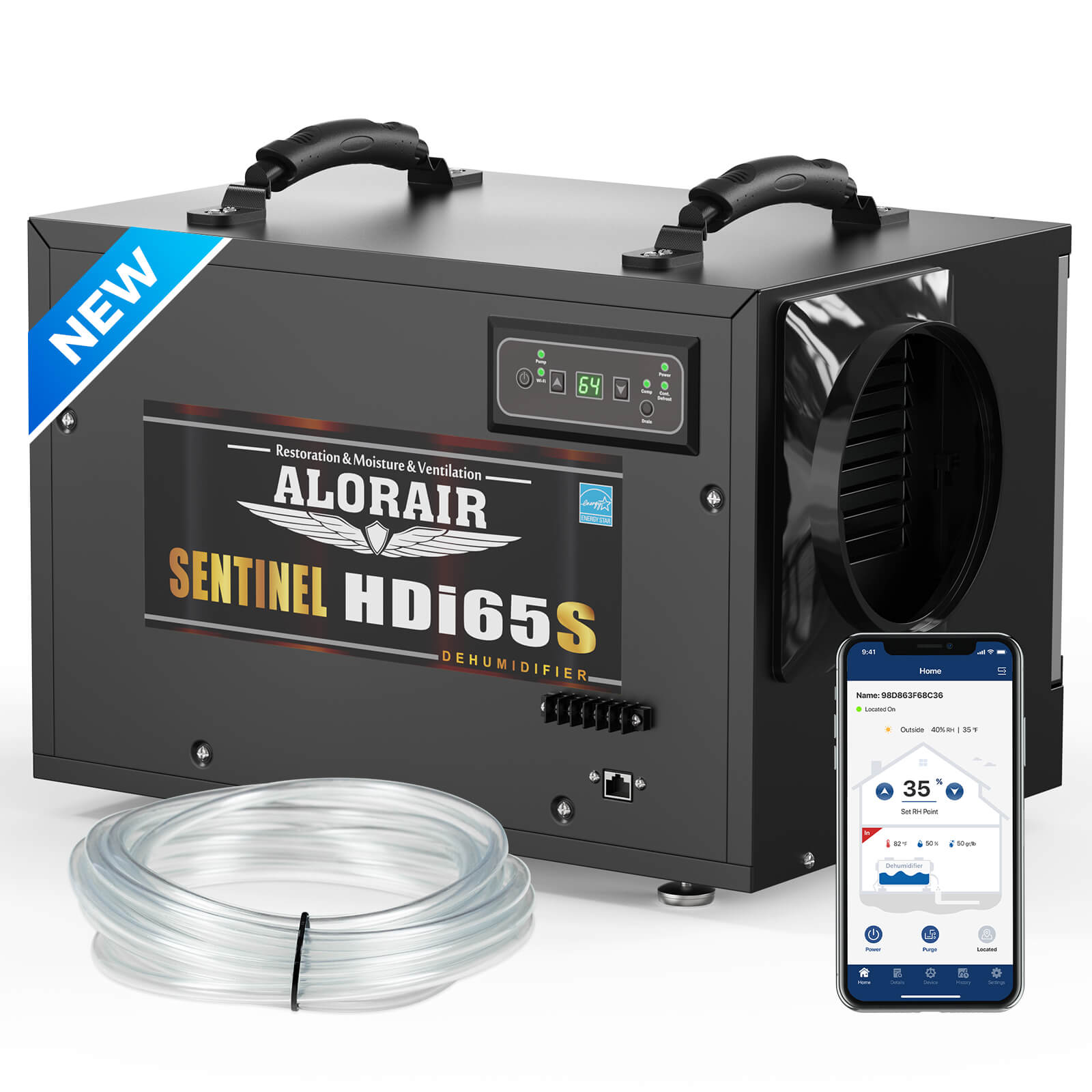
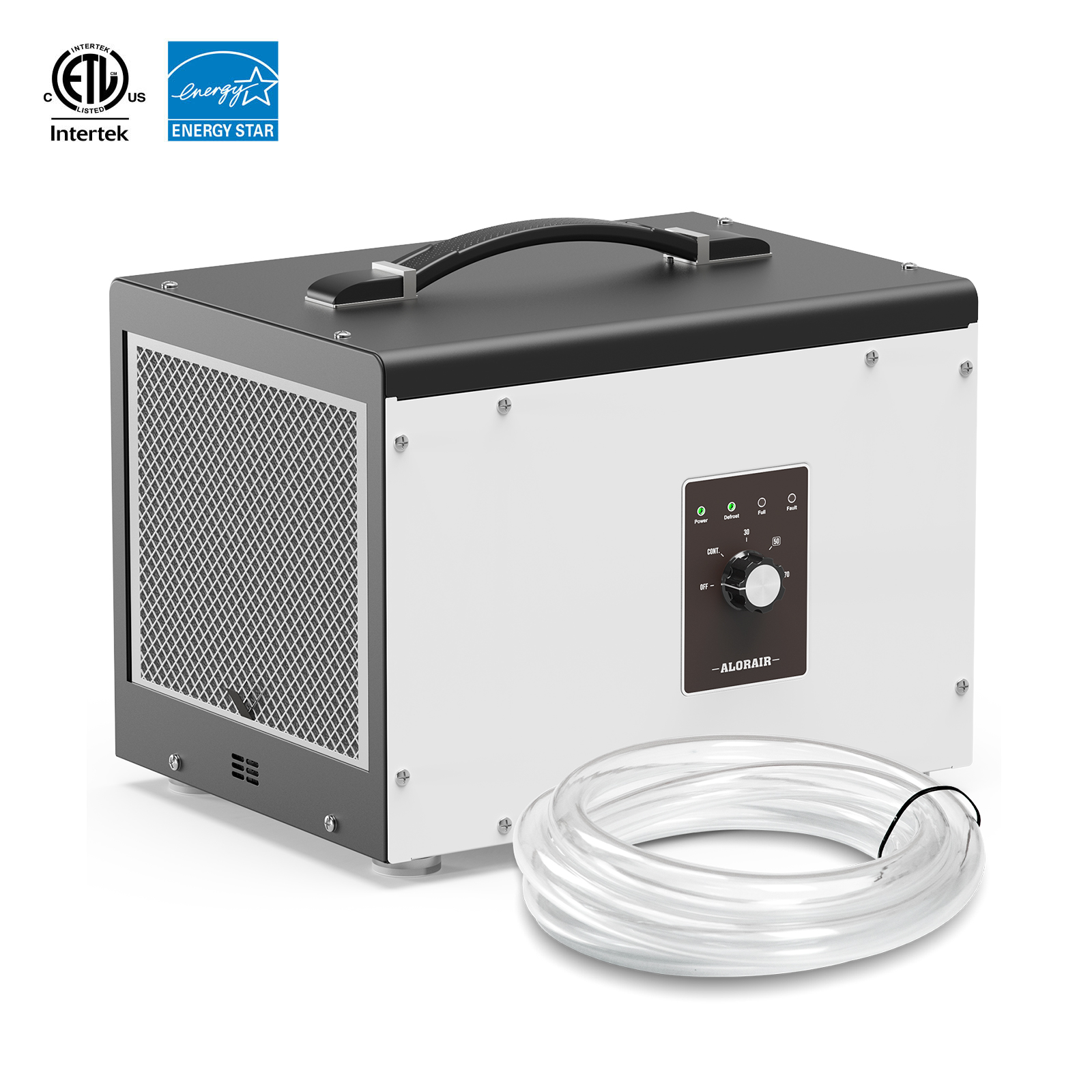
.jpg)
.jpg)

.jpg)

.HDi90.png)
.HD90.png)



.jpg)
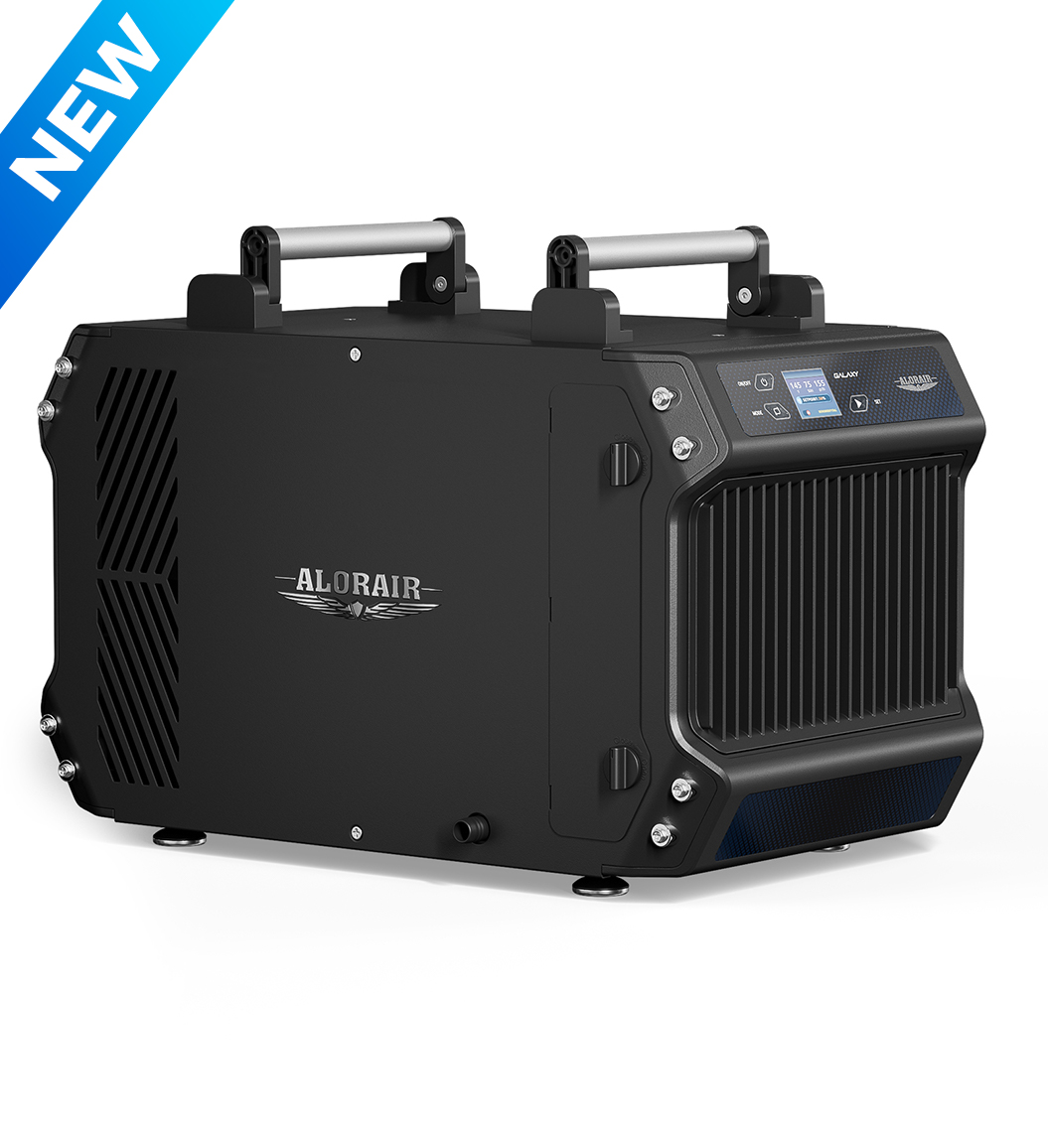
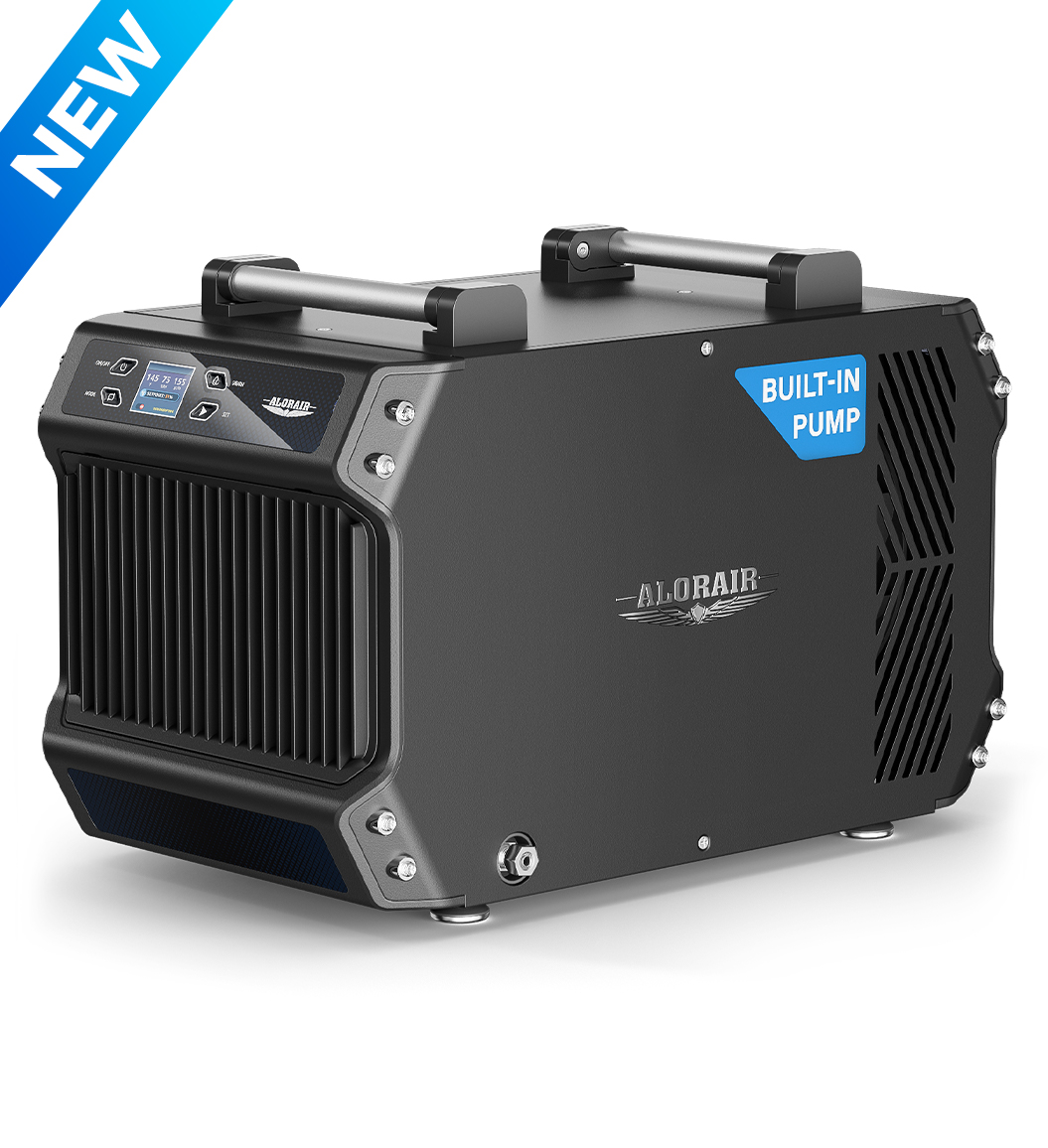




.jpg)
.jpg)
.jpg)
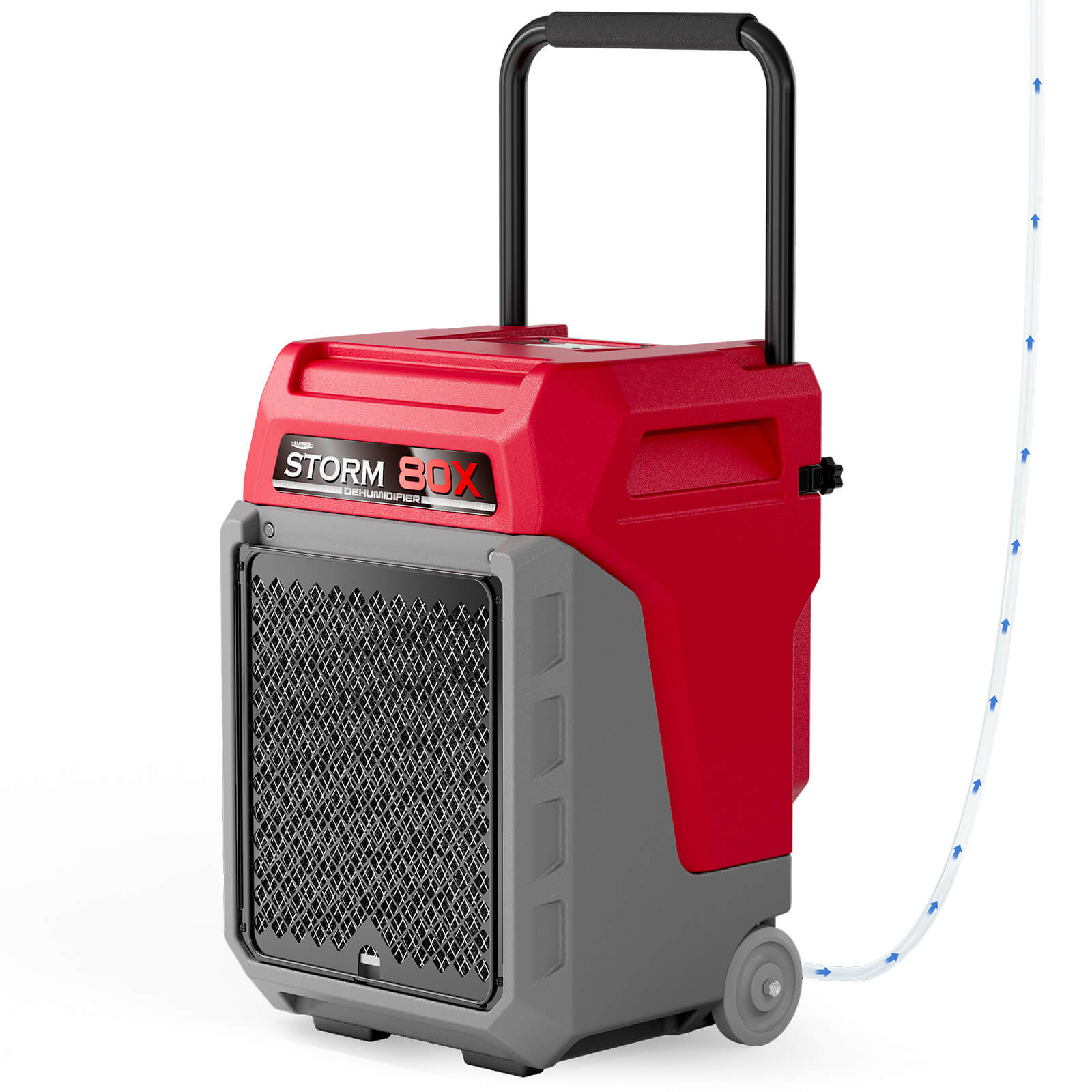


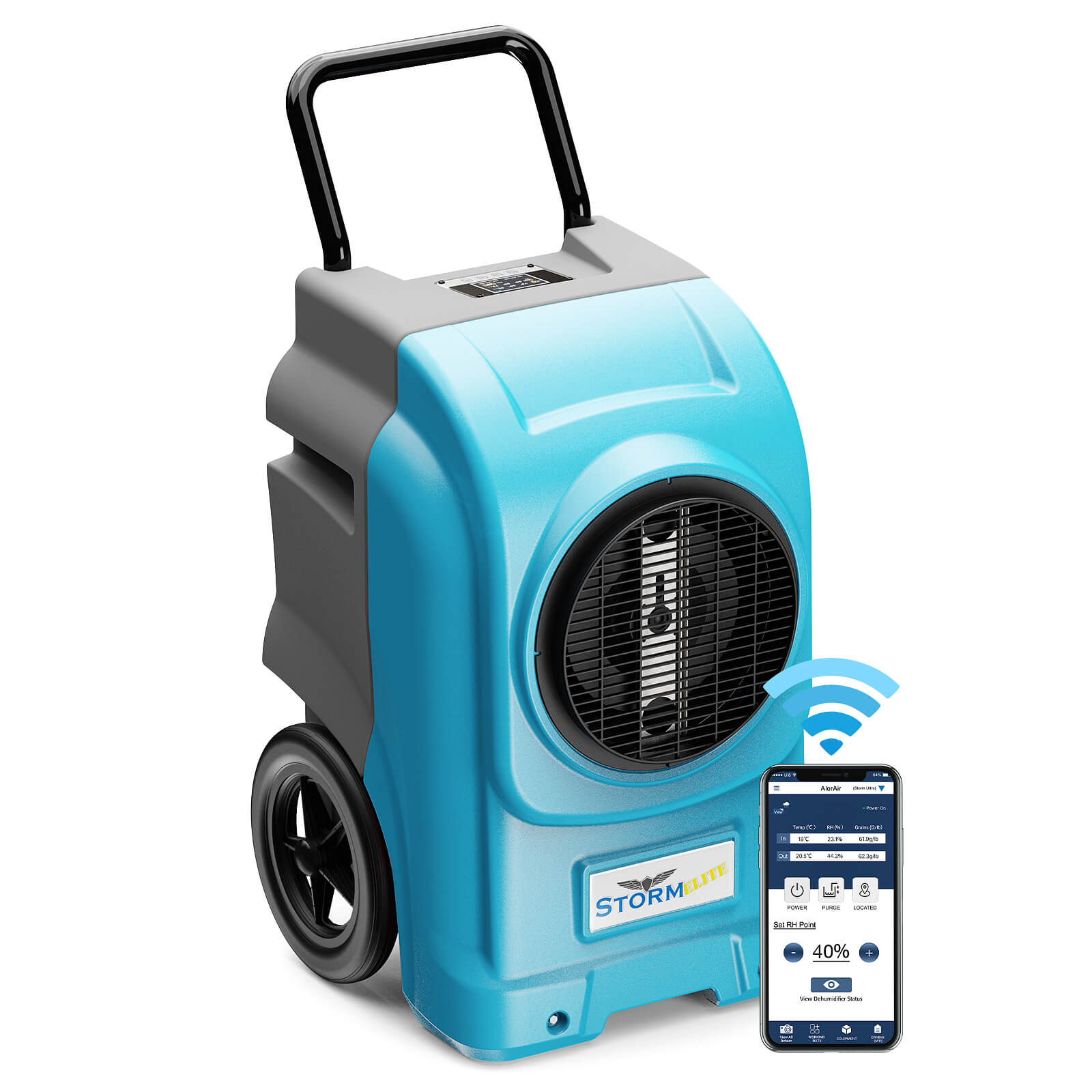

.jpg)
.jpg)

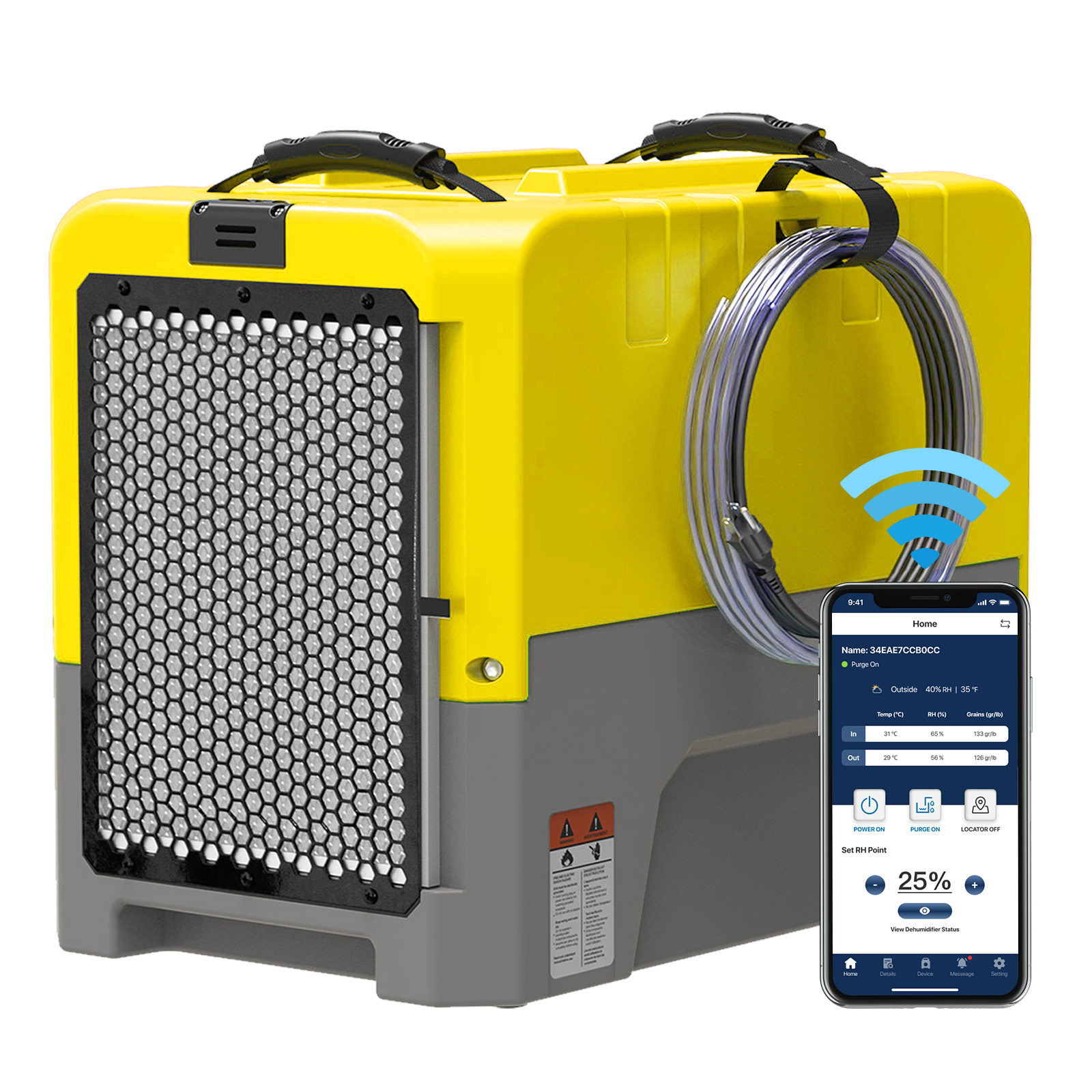








.jpg)
.jpg)








.jpg)
.jpg)










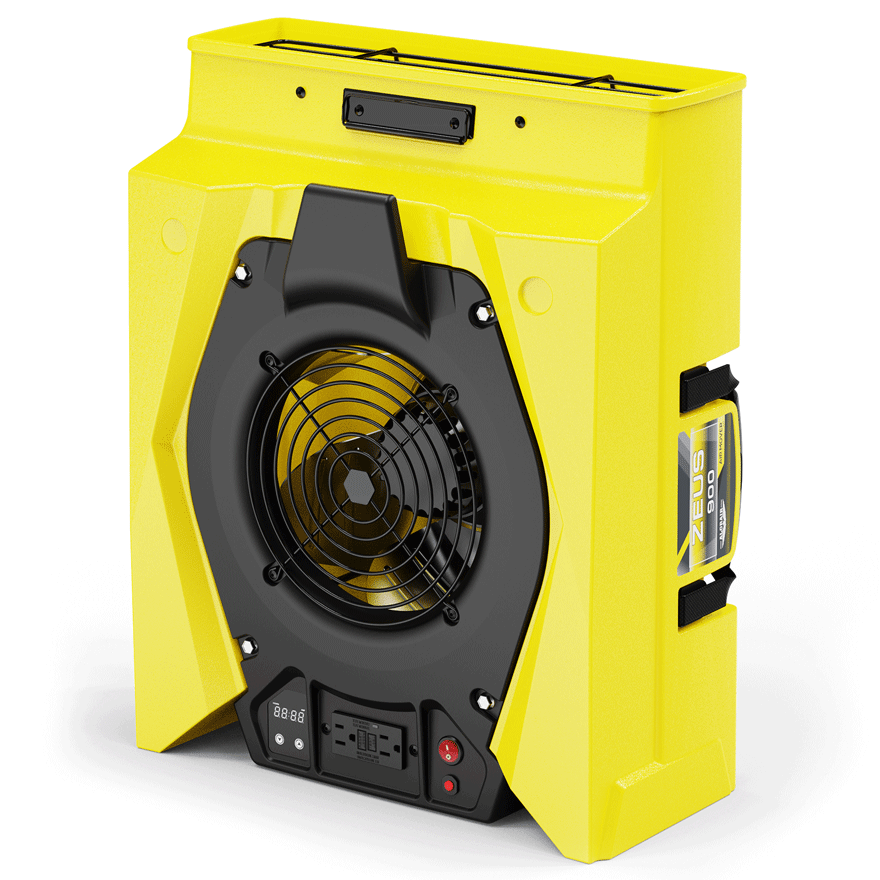
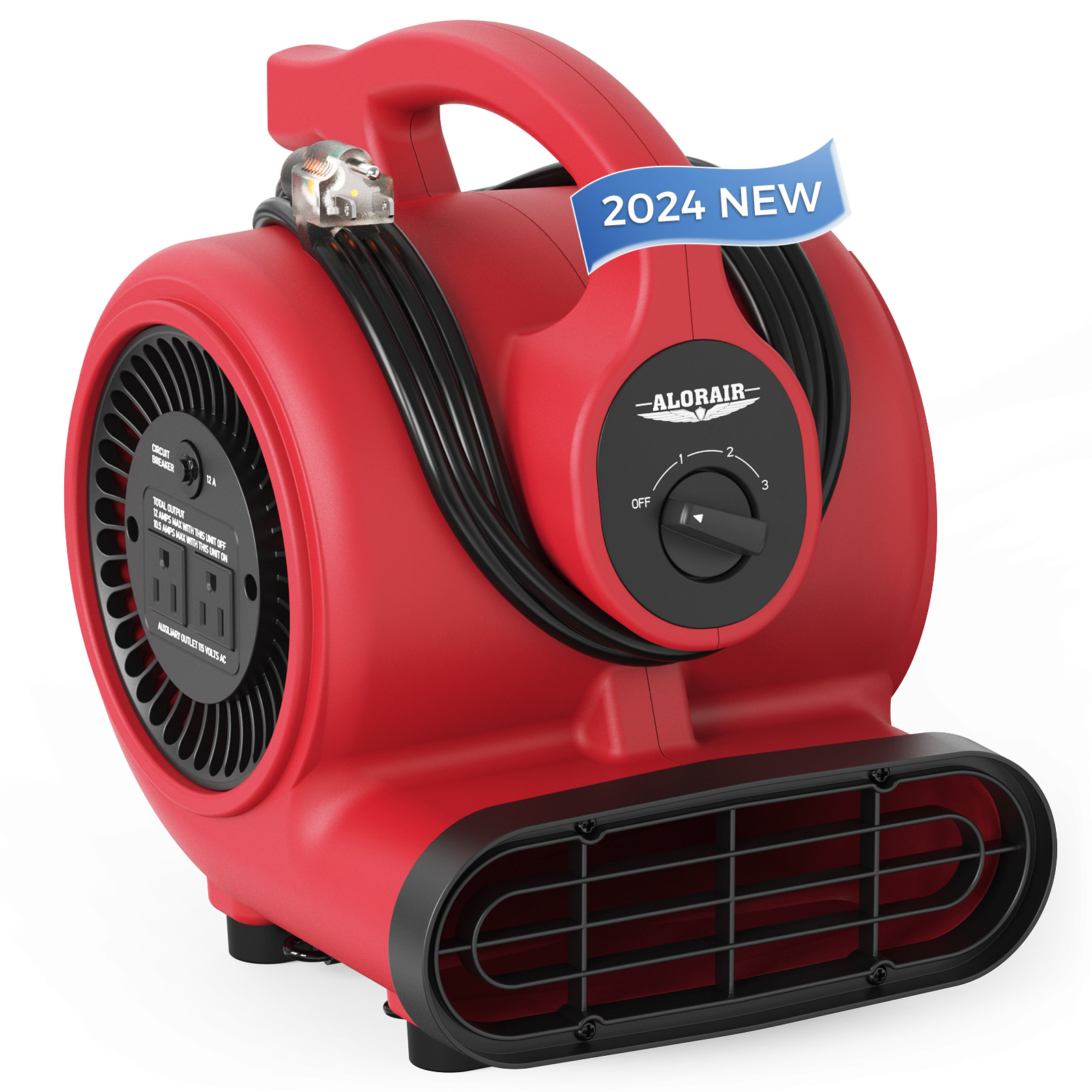
.jpg)
.jpg)
.jpg)
.jpg)
.jpg)
.jpg)
.jpg)
.jpg)
.jpg)
.jpg)
.jpg)
.jpg)
.jpg)
.jpg)





.jpg)
.jpg)
















-.jpg)
.jpg)

.jpg)
.jpg)



























 Exclusive offers
promotions
Exclusive offers
promotions

